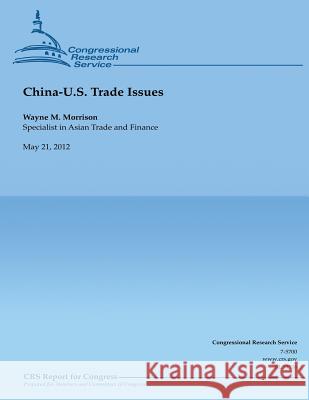China- U.S. Trade Issues » książka
China- U.S. Trade Issues
ISBN-13: 9781481846370 / Angielski / Miękka / 2012 / 52 str.
U.S.-China economic ties have expanded substantially over the past three decades. Total U.S.- China trade rose from $5 billion in 1981 to $503 billion in 2011. China is currently the United States' second-largest trading partner, its third-largest export market, and its biggest source of imports. Because U.S. imports from China have risen much more rapidly than U.S. exports to China, the U.S. merchandise trade deficit has grown from $10 billion in 1990 to $296 billion in 2011. The rapid pace of economic integration between China and the United States, while benefiting both sides overall, has made the trade relationship increasingly complex. China's large population and booming economy have made it a large and growing market for U.S. exporters and investors. According to one estimate, China is currently a $200 billion market for U.S. firms. U.S. imports of low-cost goods from China greatly benefit U.S. consumers, and U.S. firms that use China as the final point of assembly for their products, or use Chinese-made inputs for production in the United States, are able to lower costs and become more globally competitive. China's purchases of U.S. Treasury securities (which total nearly $1.2 trillion) help keep U.S. interest rates relatively low. On the other hand, many analysts argue that growing commercial ties with China have exposed many U.S. firms to greater competition from low-cost Chinese firms, which they contend has negatively affected wages and employment in a number of U.S. industries.
Zawartość książki może nie spełniać oczekiwań – reklamacje nie obejmują treści, która mogła nie być redakcyjnie ani merytorycznie opracowana.











